Local history: Akron public library debuted 150 years ago
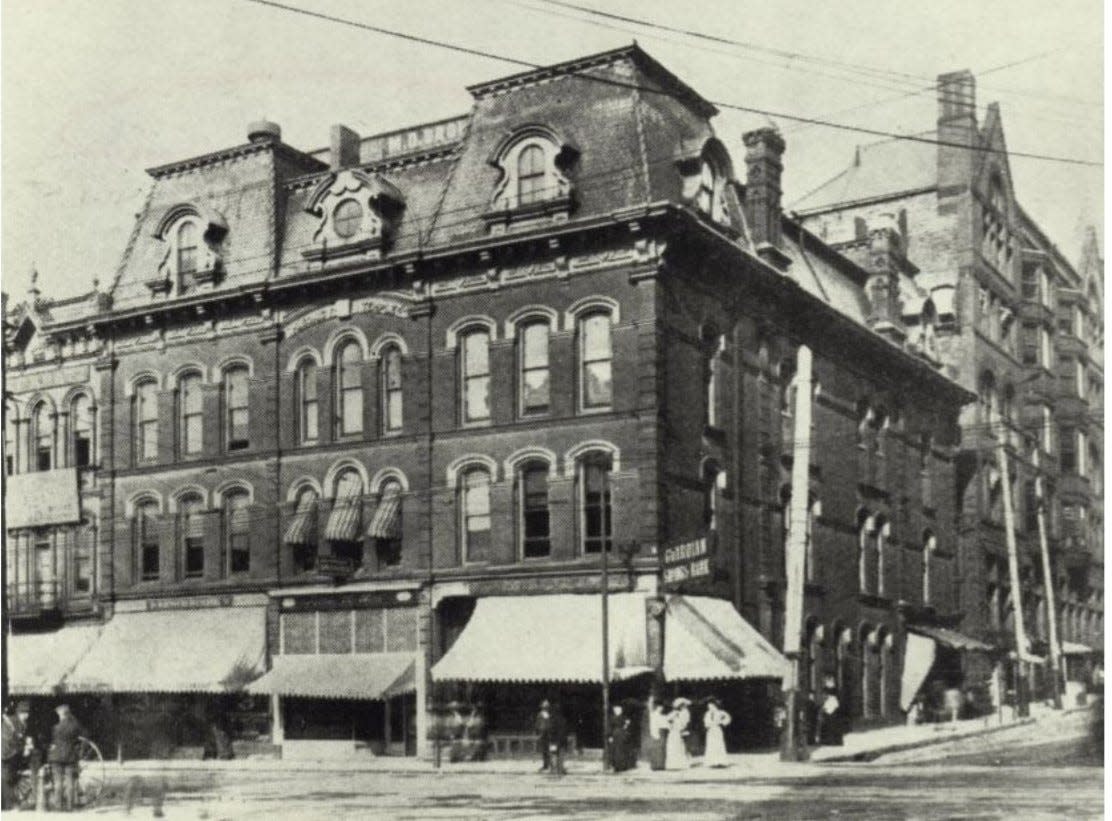
A narrow staircase, grimy and dark, led up to a shimmering new world — a fascinating land beyond the muddy canal town of Akron.
Although the room was quite small, it was packed to the ceiling with colorful characters: Roman gladiators, Danish princes, British sailors, American presidents, Indian chiefs, African hunters, French revolutionaries, Chinese emperors, Amazon explorers and Greek philosophers.
All were tucked neatly into the pages of gold-leaf books.
The opening of Akron Public Library on March 1, 1874, led to a cultural transformation in Summit County. It brought the world home.
Weeks earlier, City Council had approved a half-mill levy to finance a free library for the community of over 10,000 people.
“It will be gratifying to the citizens of Akron, and especially to those whose private libraries are deficient, that steps have been taken to establish a Free Public Library for the city, well stocked with choice books and open to the reading public,” the Summit County Beacon reported Jan. 7, 1874.
“A Library of this kind has long been regarded as one of the chief wants of the city, but the leading question which always presented itself when the subject was mentioned was how it should be supplied,” the article continued.
The public library succeeded the Akron Library Association, which was incorporated in 1866 and had more than 100 life members paying $50 in dues for the use of a private reading room on South Howard Street. The defunct group turned over 4,000 books to the new library.
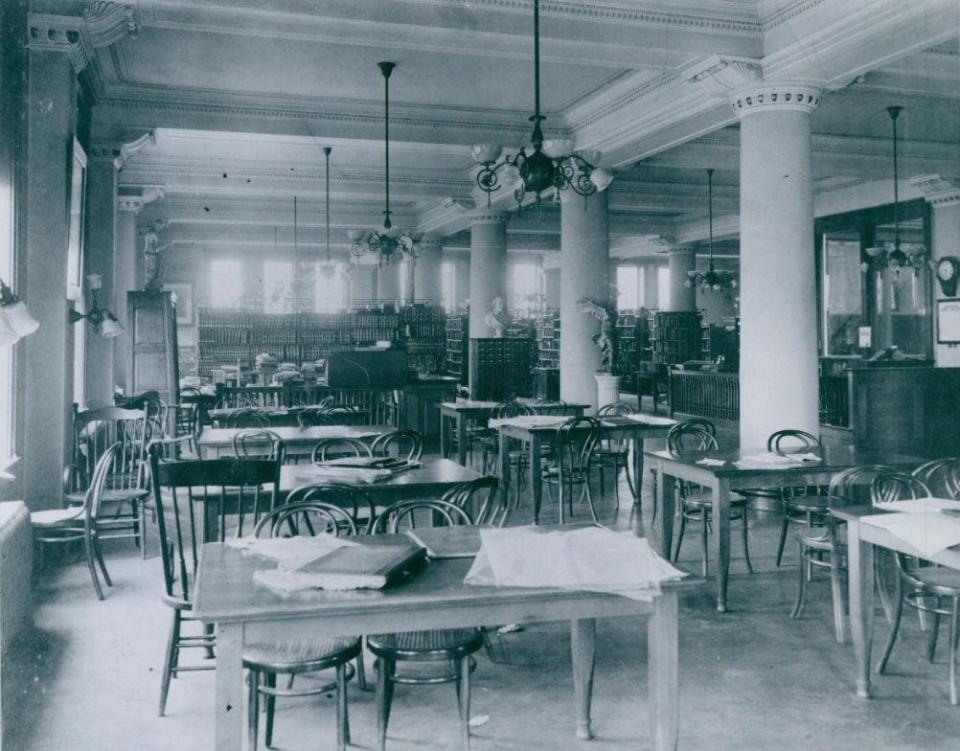
John R. Buchtel, benefactor and namesake of Buchtel College, forerunner of the University of Akron, served as the first president of the board of control.
The library opened in a second-floor room at the Masonic Temple at South Howard and Mill streets, an intersection that no longer exists today. The building was located near the southwest corner of the present-day Akron Centre Parking Deck behind FirstEnergy Corp.
Former Summit County Auditor Theron A. Noble served as the first librarian and earned $500 a year, while assistant Mary Vosburg collected $300. The library had an annual budget of $2,000 (over $55,000 today).
Akron library access restricted
During its first year, the reading room offered more than 8,000 books, seven newspapers and two magazines. Access was carefully restricted.
“The books were placed in cabinets behind heavy glass doors,” historian Helen L. Pardee wrote in 1942. “Railings barred the public from these cases, and rules forbade any except the Librarian and assistants and members of the Board to open a case or take books from shelves. Returned books were to be placed correctly upon the shelves before they might be drawn out again, and no book might be laid aside for a reader.”
Patrons requested membership tickets, an early version of library cards. Despite it being a public library, the public wasn’t always so welcome.
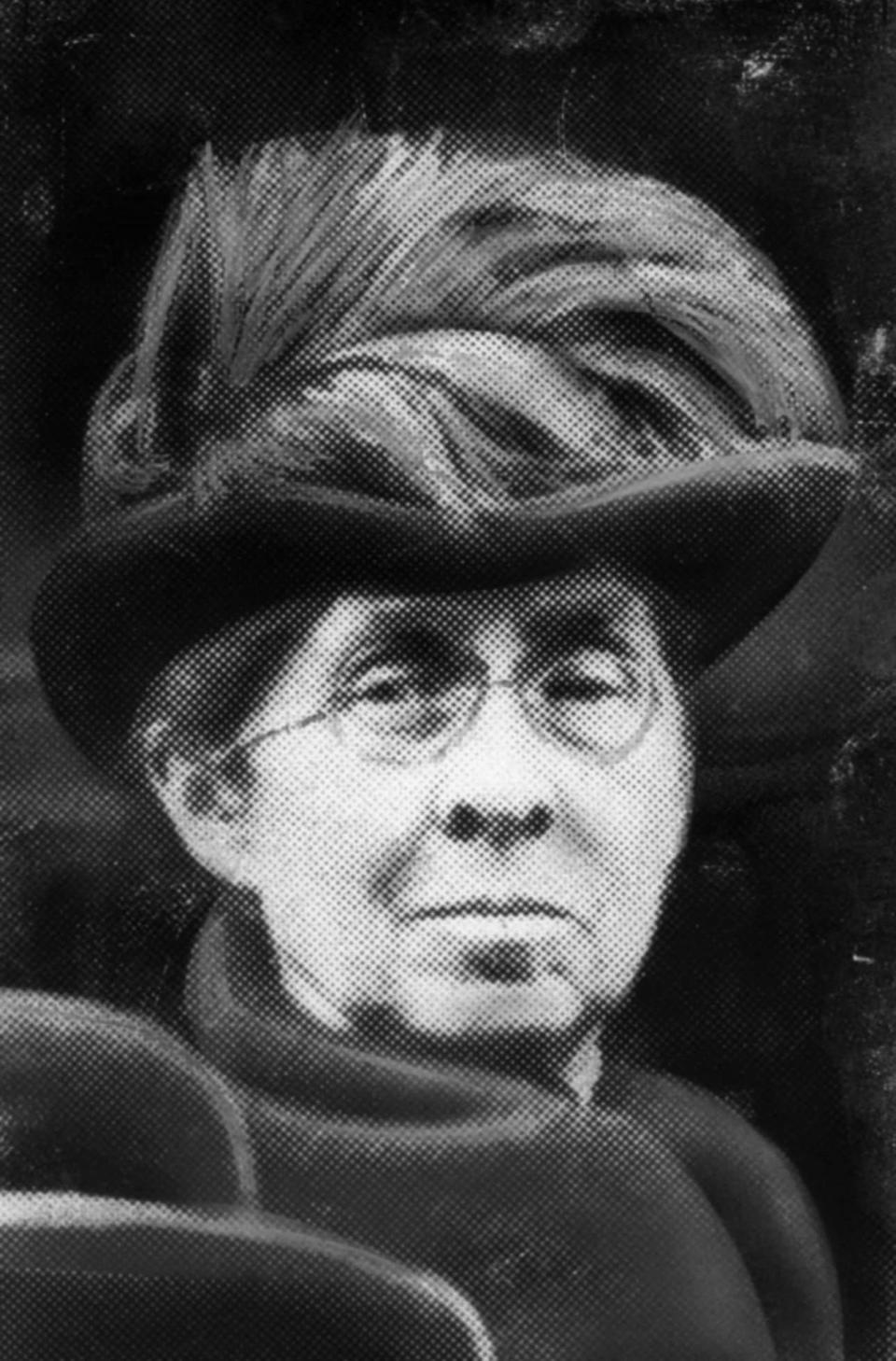
Secretary George Tod Ford, an Akron attorney, posted the board’s original rules:
“1. Residents of Akron, not under 12 years of age, known to the Librarian or vouched for, in writing, by some responsible citizen, and having a Membership Ticket, can draw one Book on his Ticket.
“2. No book drawn from the Public Library must be retained for a period exceeding TWO WEEKS. For longer detention a fine of TWO CENTS each day will be imposed.
“3. For turning down the leaves, marking, or otherwise injuring it, the holder will be fined up to the full value of the book, or the set to which it may belong.”
That’s correct. Children 11 or younger weren’t welcome at the library. And since the facility was on the second floor, it wasn’t easily accessible to older residents or people with disabilities. And what if you were new in town and didn’t have “a responsible citizen” to vouch for you?
The library gradually loosened its rules and opened its facilities to all. From humble beginnings, it became a community pillar.
Library changed locations in Akron
Quickly outgrowing its space at the Masonic Temple, the library moved to larger quarters in 1898 on the second floor of the Everett Building at Main and Market streets. That didn’t last long.
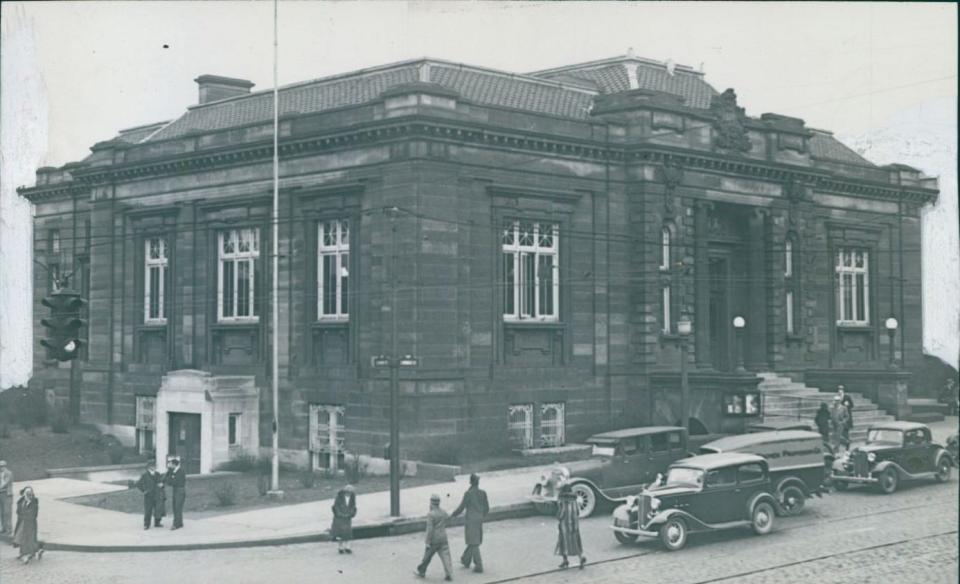
In 1901, U.S. industrialist Andrew Carnegie agreed to donate $70,000 to build a new library in Akron. He even threw in an additional $12,000 so the building could be made of stone instead of brick. Designed by Akron architect Frank O. Weary, the imposing, two-story building at North High and East Market streets opened in 1904.
“When a city has the privilege of taking part in a dedication like this, it should rejoice,” City Council President Ira A. Priest told the crowd at the grand opening. “The occasion is unique. None of us will ever take part in a similar occasion for this building will stand long after you and I have passed away.”
The building, which later served as the Akron Art Institute, still stands today as the home of Brennan, Manna & Diamond.
After Akron’s population topped 255,000 in the early 20th century, the library moved to a larger space in 1942 at the former Beacon Journal headquarters at Summit and East Market streets (now the home of Summit Artspace).
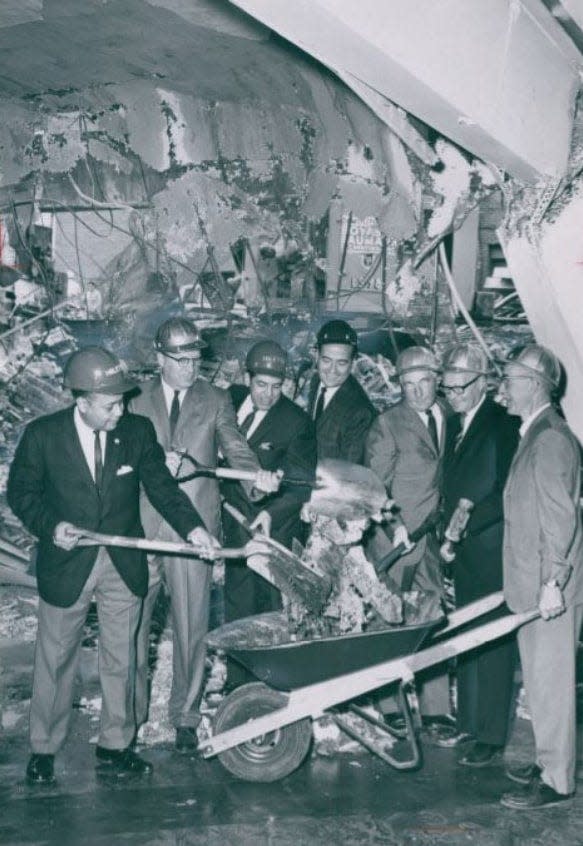
Following the approval of a $3 million bond issue in 1962, Akron architects Joseph Tuchman and Gordon Canute designed a three-story library at 55 S. Main St. The $5.3 million complex opened in 1969.
“I have seen most of the main libraries in this country. Not one is as good as this one,” retired head librarian R. Russell Munn announced at the formal dedication. “I hope you will accept it as a fact that, in its class, Akron has the best public library in the United States. And in the world.
“Use it, support it — and take appropriate pride in it.”
Grand reopening on Main Street
As the library celebrated its centennial in 1974, it announced a new name: Akron-Summit County Public Library. It added library branches, bookmobiles and other services.
In 1997, voters approved an $80 million bond issue for the Main Library and branches. In 2000, the board agreed to renovate and expand the downtown library for $50 million.
The library moved temporarily to a former department store on East Tallmadge Avenue before celebrating its grand reopening Oct. 10, 2004.
“This investment is going to be here 100 years,” Mayor Don Plusquellic told the crowd.
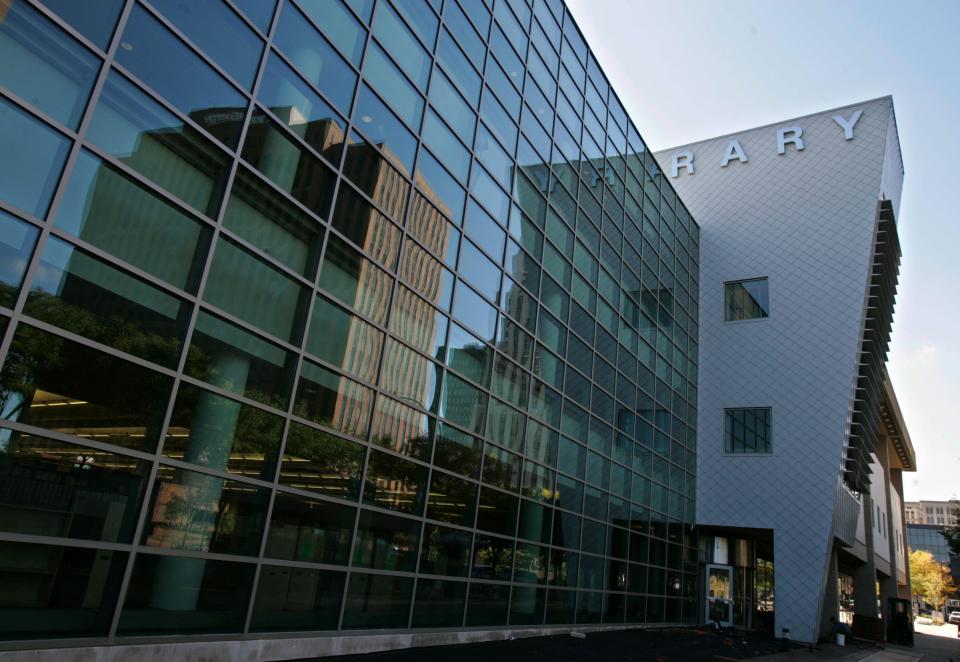
Twenty years later, the library is celebrating its 150th birthday with a year of special events and activities. In addition to the Main Library, there are 18 branch locations, two bookmobiles and a mobile services van with cart-based service to lobbies of residential buildings.
The library provides public access to more than 2 million items from its collection and can further obtain over 75 million items from the collections of other public and college libraries in Ohio.
At today’s library, patrons can surf the internet, borrow a cake pan, play a board game, enjoy a concert, reserve artwork, view a microscope, watch a movie, use a 3D printer, complete a puzzle, experiment in physics, research genealogy, eat a coney dog, read a newspaper, inflate a bicycle tire and procure a portable karaoke machine.
Oh, and obviously there are books, too. Hundreds of thousands of them. The pages are filled with all those colorful characters from 1874 plus a century and a half of new additions.
The journey began 150 years ago with a climb up a narrow staircase.
Welcome to Akron-Summit County Public Library. Use it, support it — and take appropriate pride in it.
Mark J. Price can be reached at mprice@thebeaconjournal.com
Oops! Classic bloopers from the collection of Mark J. Price
Vintage photos: 50 memorable Cleveland TV personalities
This article originally appeared on Akron Beacon Journal: Akron-Summit County Public Library had humble beginning in 1874

